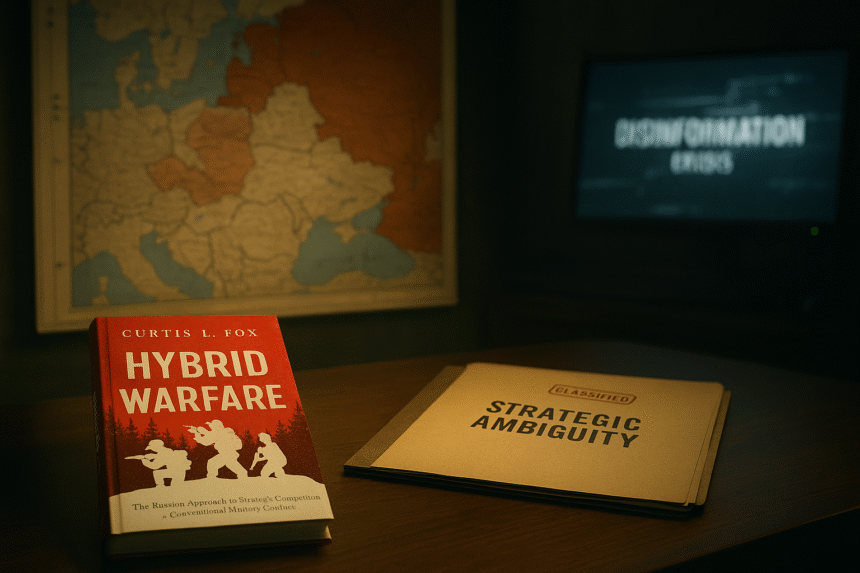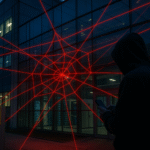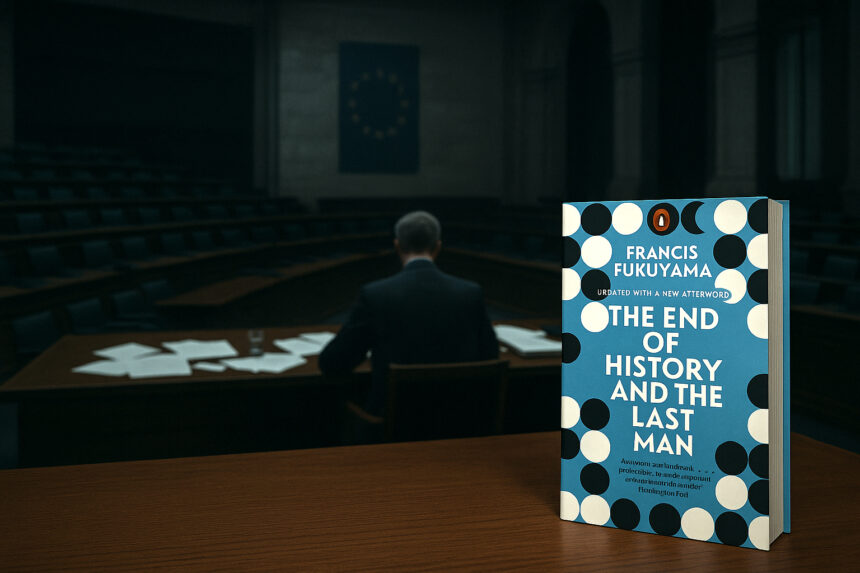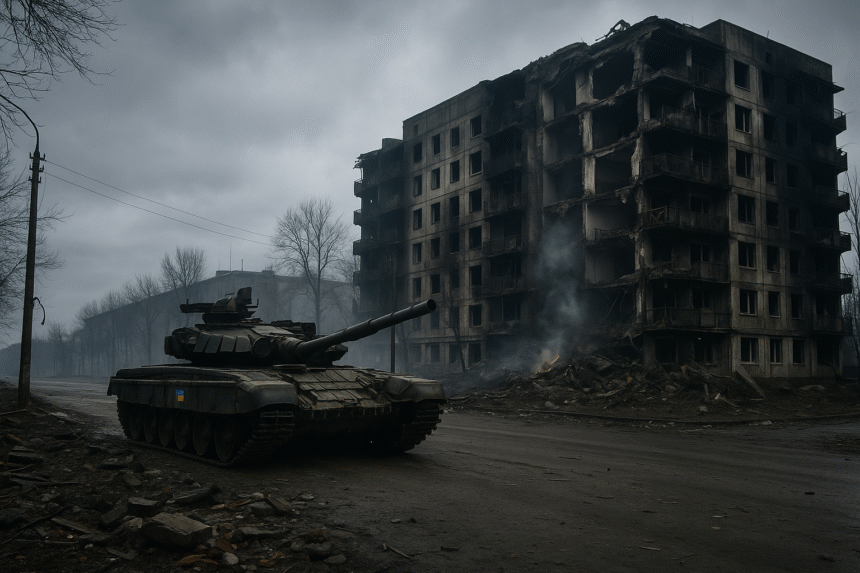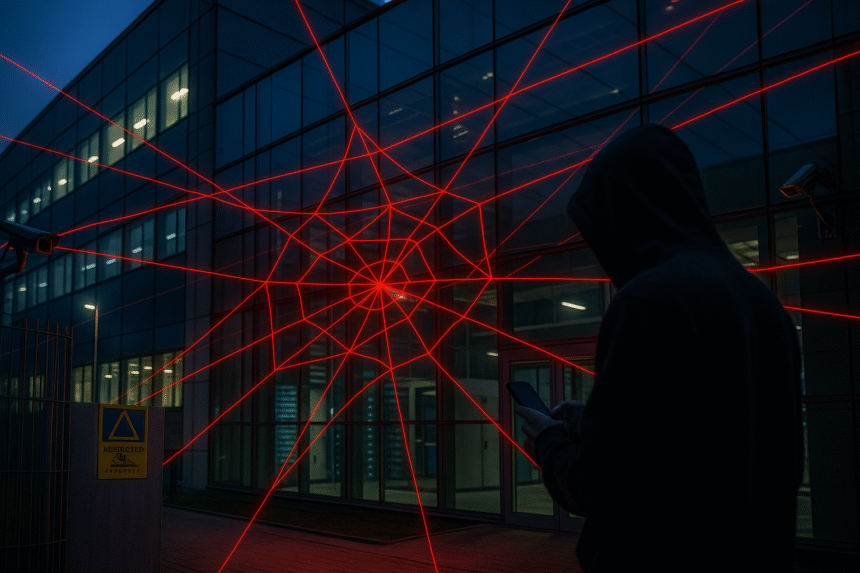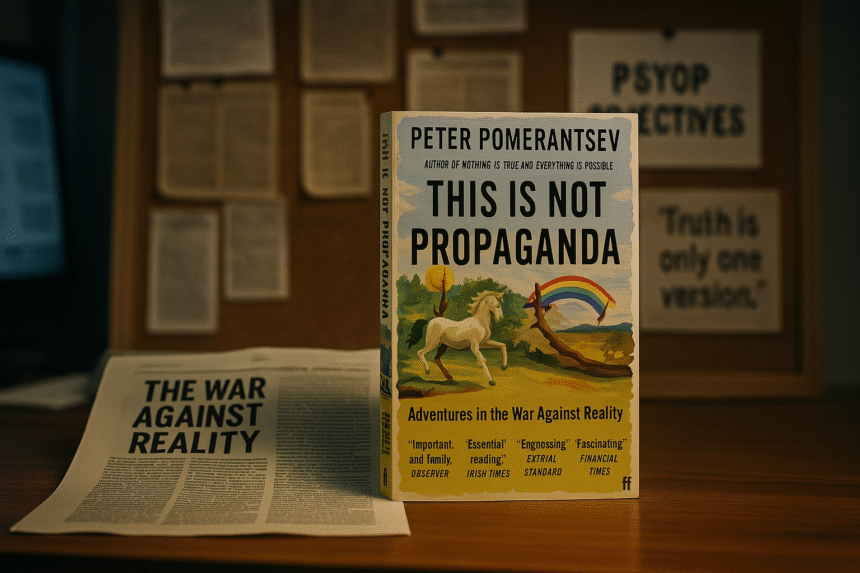The War That Writes Reality
“This is the nature of hybrid warfare: a broad, multidimensional campaign that targets both civilian and military spheres and the political, social, and psychological foundations of a state.” (Fox, 2023, p. 6)
What if war were no longer something declared, but something dreamed into being? Strategy, in that case, would cease to be a plan—it would become a theatre. And the goal? Not victory, but confusion. Hybrid Warfare, by Curtis L. Fox, is not simply a military treatise—it is a work of philosophical journalism disguised as doctrinal analysis. It dissects a state whose power projection relies less on force and more on manipulating time, meaning, and perception. To read it is to glimpse the architecture of metaphysical war.

1. War as a Total Cultural Form
Fox begins not with tactics but with civilisational psychology. He argues that Russia never truly transitioned into the postwar order. Instead, the state adapted—weaponising its traumas, mythologising its defeats, and encoding its vulnerabilities into a doctrine that transcends military science. Hybrid Warfare is not about irregular conflict. Instead, it is about an irregular reality.
Russia does not fight to win. Rather, it fights to disorient. Its strategy is not conquest, but unmaking. Every buffer state is not merely spatial insulation but an ontological shield. The theatre is not Donbas or Crimea. More accurately, the actual theatre is Western cognition.

2. Geography as Epistemology: Russia’s Spatial Wound
Fox’s central claim is stark: geography creates epistemology. According to him, Russia’s flat, indefensible expanse renders it eternally vulnerable to penetration—psychologically, physically, and symbolically. Consequently, hybrid warfare becomes the spiritual response to this wound.
“Russian leaders have consistently viewed their nation as vulnerable to encirclement by hostile powers, a belief rooted in geography and reinforced by history.” (Fox, 2023, p. 15)
While the West builds borders, Russia builds fog. Whereas the West constructs deterrence, Russia projects myth. Therefore, the hybrid method functions as a ritual of insulation, crafted to delay the West’s comprehension long enough for realities to be rewritten.

3. Doctrine as Dream: The Aesthetic of Maskirovka
Fox meticulously unpacks Maskirovka—often reduced to “camouflage”—and restores its full strategic potency. In Russian doctrine, Maskirovka is not a cover; instead, it is a form of authorship. This concept stages conflict like theatre: scripting false intentions, misleading observers, and crafting illusions that command real-world consequences.
“Maskirovka encompasses a wide range of deceptive measures, including camouflage, denial, and misdirection, all designed to manipulate an opponent’s decision-making process.” (Fox, 2023, p. 37)
This is where hybrid warfare enters the realm of metaphysics. Russia does not merely blur the line between peace and war—it dissolves the boundary between signal and noise. Through Maskirovka, a missile battery becomes humanitarian aid; a coup becomes a protest; and an occupation becomes a referendum.

4. Asymmetry and the Tempo of War
Russia’s hybrid method weaponises not just space, but also time. Fox explains that the campaigns in Ukraine are structured to generate asymmetry of perception. On one hand, Russia moves swiftly. On the other hand, the West deliberates. Furthermore, while Russia escalates ambiguously, NATO seeks attribution.
“One of the key characteristics of hybrid warfare is the manipulation of time and tempo to achieve surprise and to disrupt the enemy’s response cycle.” (Fox, 2023, p. 65)
This produces psychological asynchrony—the target, whether a nation, alliance, or population, falls behind in narrative time. By the time a coherent story is assembled, it is already obsolete. Consequently, the response window narrows. In turn, paralysis spreads through both media and command structures.
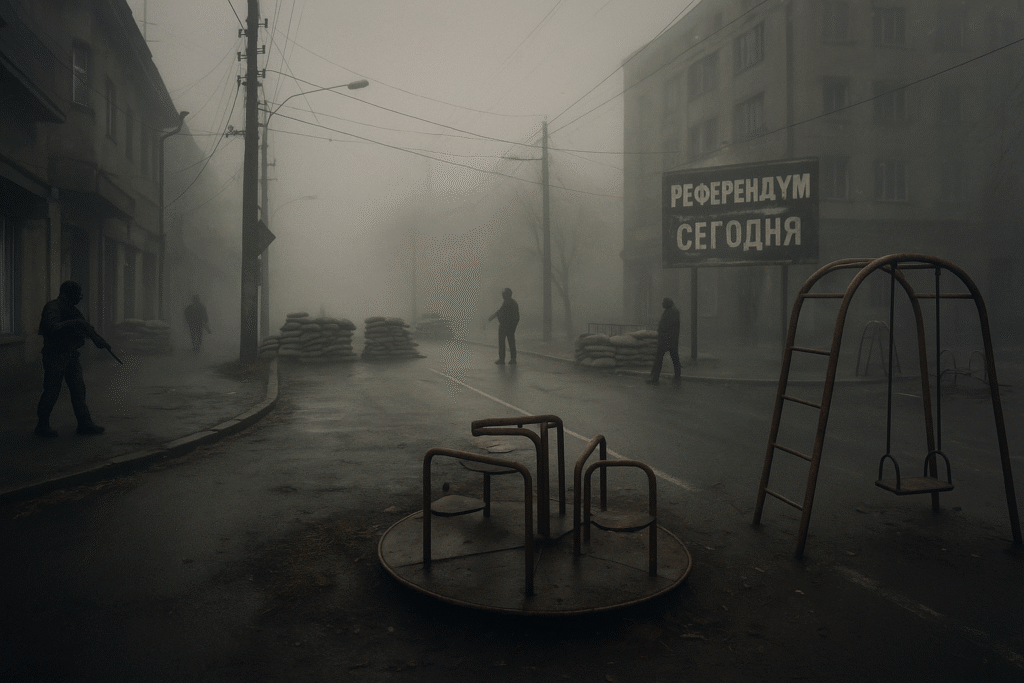
5. The Donbas as Ritual Theatre
Fox’s analysis of Donbas is surgical. He does not see it as a tactical misstep or frozen conflict. Instead, he reads it as a symbolic incision—a sustained wound inflicted not to destroy, but to bleed. Donbas functions as a liminal zone: unresolved, undefined, perpetual.
“In eastern Ukraine, Russia has created a gray zone of conflict that provides plausible deniability while achieving strategic objectives.” (Fox, 2023, p. 77)
Such zones are strategically productive. They ensure Ukraine cannot consolidate sovereignty, and they ensure Europe cannot reach a consensus. They guarantee that the West’s attention is forever dislocated—somewhere between outrage and fatigue.
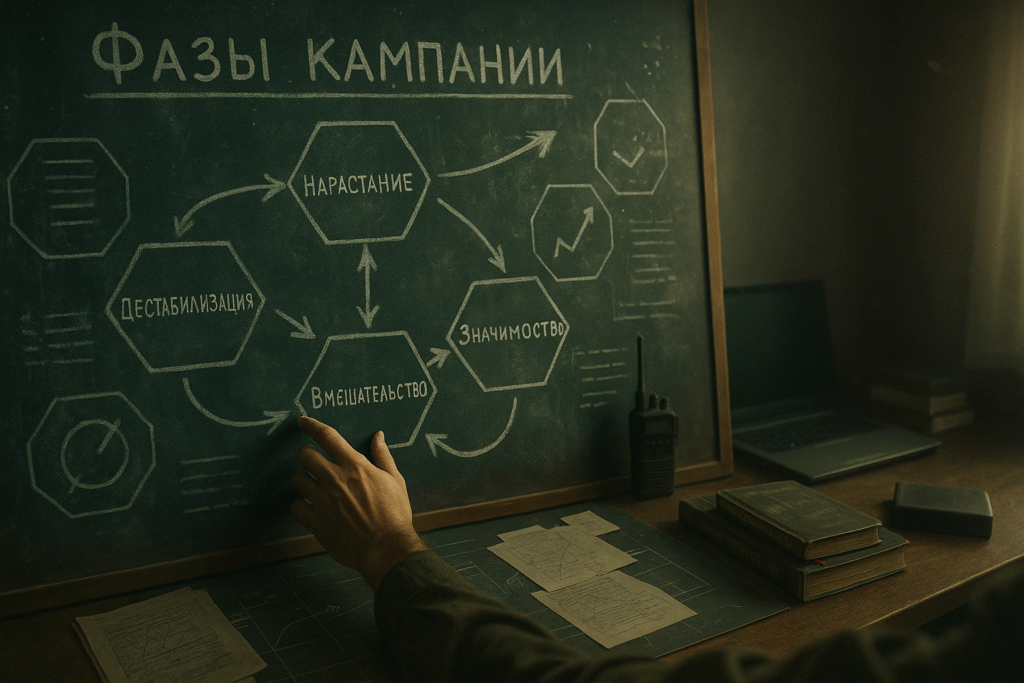
6. Gerasimov and the Non-Linear Cosmos
Fox clarifies a critical misconception: there is no “Gerasimov Doctrine” as such. What Gerasimov offers is not a manual but a cosmology of conflict. His famous six-phase model (penetration, pressure, destabilisation, escalation, seizure, normalisation) is not linear. Instead, it is ritualistic.
“Gerasimov emphasized the growing importance of nonmilitary means in achieving strategic objectives, including information warfare, political subversion, and economic pressure.” (Fox, 2023, p. 86)
Each phase masks itself as the previous one. Escalation appears as negotiation, seizure appears as humanitarian aid, and war appears as peacekeeping. In Fox’s reading, the Gerasimov model uses narrative form as camouflage.

7. Information Saturation and the Death of Belief
In perhaps the most profound section, Fox addresses the cognitive battlefield. Hybrid warfare is not fought over control of infrastructure. Instead, it is fought over credibility. Russia’s information operations do not aim to convince. Instead, they aim to exhaust.
“Rather than shaping a coherent narrative, Russian information operations often seek to flood the information space with contradictory messages to create confusion and distrust.” (Fox, 2023, p. 102)
Fake news, troll campaigns, manipulated referenda, staged events—these are not merely propaganda. They are weapons in the war against meaning itself. Therefore, the battlefield is not digital. It is ontological.

8. The Philosopher of the Fog
Curtis L. Fox is not just an analyst. He is a strategic philosopher, decoding the symbolic mechanics of 21st-century warfare. This book is not merely a warning—it is a lexicon. It teaches the reader how to name what they were never meant to see.
Hybrid Warfare is not for casual readers. It is for strategists, thinkers, civil society operators—those who understand that the war has already begun, and that it does not look like war.
“Understanding hybrid warfare requires not only recognizing its individual components but also appreciating how they interact in a comprehensive, adaptive strategy.” (Fox, 2023, p. 112)
Read Strategically. Resist Systemically.
This book is not optional for those operating within the fog—journalists, analysts, dissidents, officers.
→ Buy Curtis L. Fox’s Hybrid Warfare now via this affiliate link
→ Support our counter-narrative mission: patreon.com/frontlineeuropa
References
- Fox, C. L. (2023). Hybrid Warfare: The Russian Approach to Strategic Competition and Conventional Military Conflict. -30- Press Publishing.
- Clausewitz, C. von. (1832). On War. Oxford University Press, 2007 edition.
- Gerasimov, V. (2013). “The Value of Science Is in the Foresight.” Voenno-Promyshlennyi Kurier.
- Baudrillard, J. (1991). The Gulf War Did Not Take Place. Paris: Galilée.
- Snyder, T. (2018). The Road to Unfreedom. New York: Tim Duggan Books.
